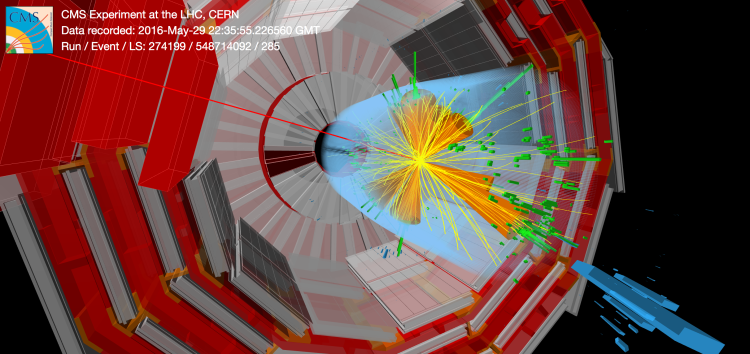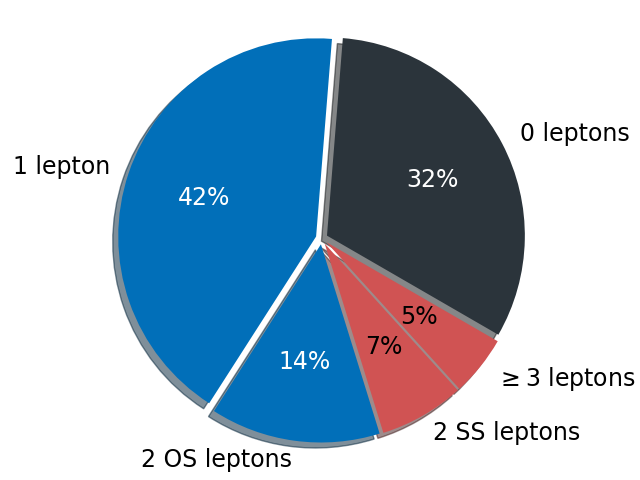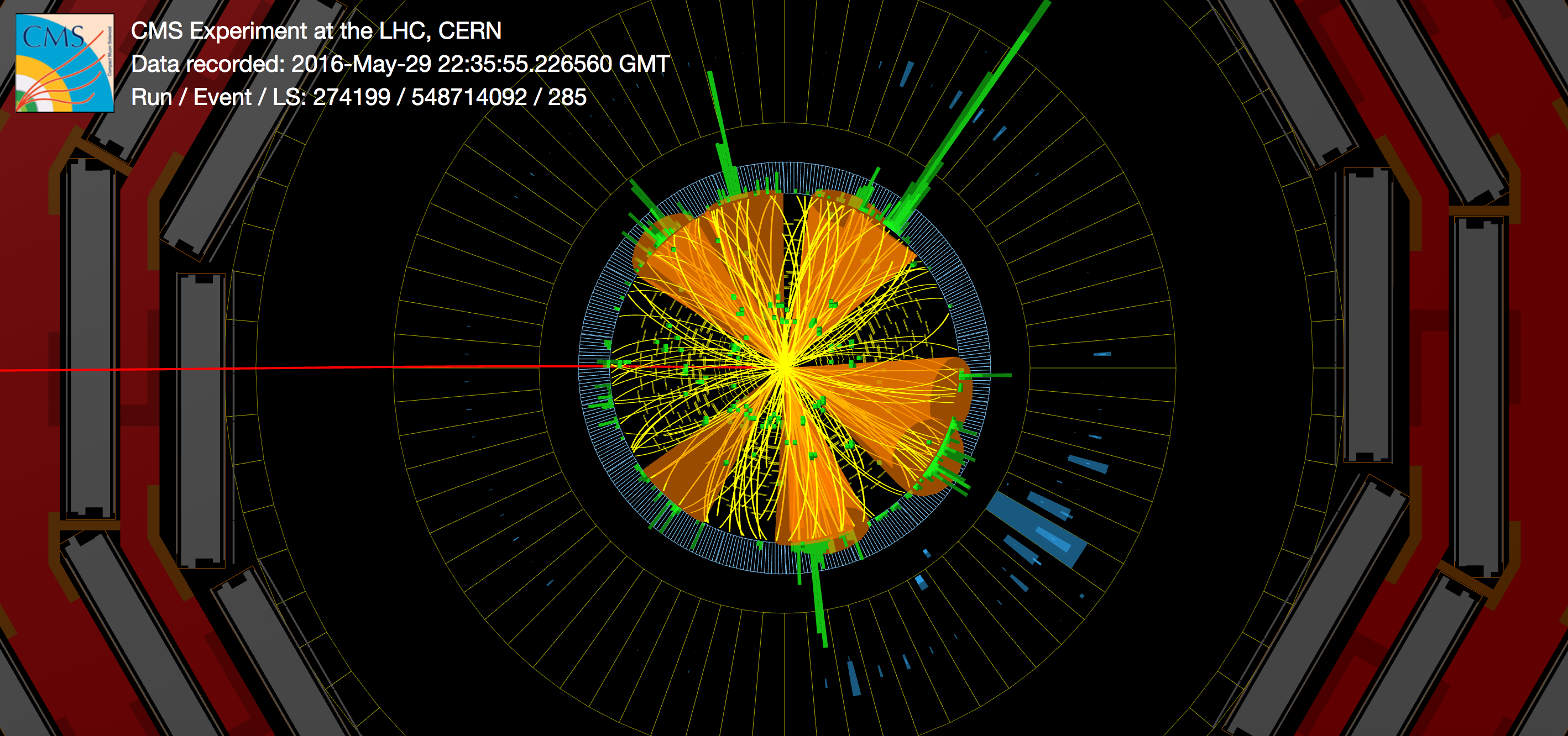
The CMS collaboration has seen evidence of a rare mechanism to produce four top quarks. The simultaneous production of four top quarks is predicted by the standard model and, as a bonus, the process is sensitive to many hypothetical undiscovered particles and forces that could subtly change how often four quarks are made (and how they behave). The new result has a significance of 3.9 standard deviations, which means that the chances of the result being a statistical fluke are very small - only about one in twenty thousand!
Top quarks are elusive particles. The top quark is the heavyweight of the standard model. It is so rare that, on average, just one out of hundreds of millions of collisions produces a top quark. And they’re special: top quarks could be the key to understanding how and why the Higgs boson has the mass it has, an important puzzle in our understanding of elementary particles.
Top quarks can be produced in many ways. Top quark-antiquark pairs are the most common, and particle physicists have seen single top quarks on their own. But, much more rarely, it should also be possible that four top quarks are simultaneously produced! That would mean two top quarks and two top antiquarks coming from the same collision. The standard model predicts how often this happens using a quantity called the cross section. The predicted cross section to produce four top quarks is a very tiny value: only 12 femtobarn. That’s 65000 times smaller than the top quark pair cross section. For each collision producing four top quarks, we expect 4000 collisions producing Higgs bosons!
Searching for events with four top quarks is challenging, but definitely worth it. New undiscovered particles, or even just the interaction between the top quark and the Higgs boson being different from what we expect, would change (likely increase) how often four top quarks are made. At the same time, four top quark production leads to spectacular events. Each top quark breaks up into a W boson and a bottom quark, and every quark creates a distinctive spray of particles called a jet. The W boson can produce a charged lepton and a neutrino, or two quark jets. This means that the detector signature that physicists use to identify four top quark events varies drastically, and can contain anything from zero up to four charged leptons, such as muons or electrons, and up to twelve jets. The search for four top quark events focuses on one of the busiest signatures that we study at the LHC. It is very challenging, especially in the case of the signatures with a small number of charged leptons.

Figure 1: Fraction of tttt events resulting in 0, 1, 2 or at least 3 leptons (muons or electrons). Events with 2 leptons are split according to the electric charges: opposite charge (OS) or same charge (SS) leptons.
In the new result, CMS focuses for the first time on the scenario where only jets are produced. A new machine learning algorithm has been used, not only to distinguish the four top quark events from other kinds of collisions (uninteresting events that we call background), but also (for the first time at the LHC) to predict the behaviour of that background using the measured data, after having been trained to predict the background properties using simulated events.
For the signatures where only one or two opposite charge electrons or muons are expected, the main challenge is to identify the background coming from top quark pairs, sometimes produced simultaneously with Higgs, W, and Z bosons. Advances in experimental techniques and background evaluation, typically using more machine learning, improve our insight and understanding of these kinds of LHC events.

Figure 2: Event display of a candidate tttt event with one of the top quark candidates producing a jet originating from a b quark (b jet), a muon and a neutrino (that the CMS experiment cannot directly detect). The additional jets could come from the other three top quarks.
When all these different CMS searches for four top events are combined, the expected sensitivity to see standard model production of four top quarks already exceeds the three standard deviations that particle physicists usually require to claim evidence for a new production mechanism. The number of collisions seen to be consistent with four top quark production slightly exceeds the prediction of the standard model, but is still fully compatible with it within the large measurement uncertainties. The precision of the analysis will greatly improve as more data are added, so that four top quark production is one of the exciting topics to be studied during the Run 3 of the LHC, as well as with the High-Luminosity LHC, which should start operation in the late 2020s and produce 20 times more data than we have now.
Read more about these results:
-
CMS Physics Paper "Evidence for the production of four top quarks in proton-proton collisions at √s = 13 TeV"
-
@CMSExperiment on social media: facebook - twitter - instagram
- Do you like these briefings and want to get an email notification when there is a new one? Subscribe here

